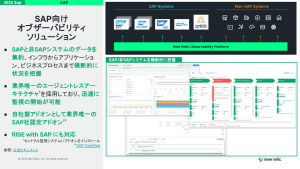You may still imagine buying a used car means visiting a car lot and browsing the stock under the fluttering flags while a pushy dealer tries every trick in the book to separate you from your cash. But for modern car dealers and wholesalers, it’s now all about online listings, live-streamed auctions, and mobile bids.
 In pole position when it comes to 21st-century used car sales is Manheim, a historic company with a distinctly contemporary outlook. With 20,000 employees operating more than 110 locations, registering 7.5 million used vehicles annually through more than 780 weekly sales (as of January 2017), Manheim is committed to helping its clients—car buyers and sellers alike—save time and money while reducing risk.
In pole position when it comes to 21st-century used car sales is Manheim, a historic company with a distinctly contemporary outlook. With 20,000 employees operating more than 110 locations, registering 7.5 million used vehicles annually through more than 780 weekly sales (as of January 2017), Manheim is committed to helping its clients—car buyers and sellers alike—save time and money while reducing risk.
According to Jason Riggins, director of production engineering for Manheim, the company is eager to harness the power of technology to improve the vehicle auction process. That means “using it to offer all the data-driven services and real-time information about vehicles that make us more than just an auto wholesaler.”
Key to that effort is the New Relic platform, which provides real-time performance monitoring and optimization across all of Manheim’s systems, sites, and apps.
Immediate improvements
One of Manheim’s most popular and successful services is its Online Vehicle Exchange (OVE). This eBay-style listed bid marketplace boasts more than 235,000 listings a month, with a total of 2.3 million vehicles sold since it launched in 2007.
But, as software developer Kris Kemper explains, it was that service’s teething problems that prompted Manheim to first deploy New Relic back in 2008. “At the time, the only way we had to solve performance problems was to go onto the production servers and look at time stamps, logs, and things like that—a difficult and time-consuming way to get information. We could also go through the manual process of trying to reproduce a problem, which again was extremely laborious and not always successful.”
Installing New Relic brought immediate improvements. “New Relic auto-instrumented itself,” Kris says. “It would say, ‘These are the calls to your controller methods; this is how long they take. This is how many database calls happen; this is how long they take.’ Suddenly, when someone said there was a problem, I could go back and correlate these things with very little effort.” Best of all, just using New Relic helped improve OVE’s performance, making life better for Kris and his colleagues.
Absolute necessity
Another key development for Manheim was instituting Service Level Agreements (SLAs) for performance. Before it had access to the data generated by New Relic, the company simply didn’t have enough information to establish meaningful SLAs and track whether they were being met.

“Our search platform was slow to deliver pages,” says Rick MacConnell, senior director of development. “This led to us establishing an SLA that we were able to achieve by defining it as an Apdex in New Relic. We were then able to use the data we gathered from New Relic to demonstrate to our leadership that we were meeting that SLA.”
Today, Manheim enforces SLAs for each application, aiming to ensure that data flows through its system in real time, or very close to it. This, Rick says, is “an absolute necessity for an auction business in which the pace of sales is incredibly fast.”
No surprises, please
More recently, Manheim has formed “capability teams” among its engineers. These units take full responsibility for a particular application or service, from development all the way through to production. As a result, Jason explains, “we’ve been able to greatly accelerate product releases and eliminate the surprises in their deployment. Not surprisingly, New Relic has had a big role in that.”
Surprises are something you definitely don’t want when you’re buying or selling used cars. And thanks to New Relic they’re also something Manheim’s technology teams no longer need to worry about.
To learn more about how digital intelligence drives the company’s success, be sure to watch the video below:
本ブログに掲載されている見解は著者に所属するものであり、必ずしも New Relic 株式会社の公式見解であるわけではありません。また、本ブログには、外部サイトにアクセスするリンクが含まれる場合があります。それらリンク先の内容について、New Relic がいかなる保証も提供することはありません。



